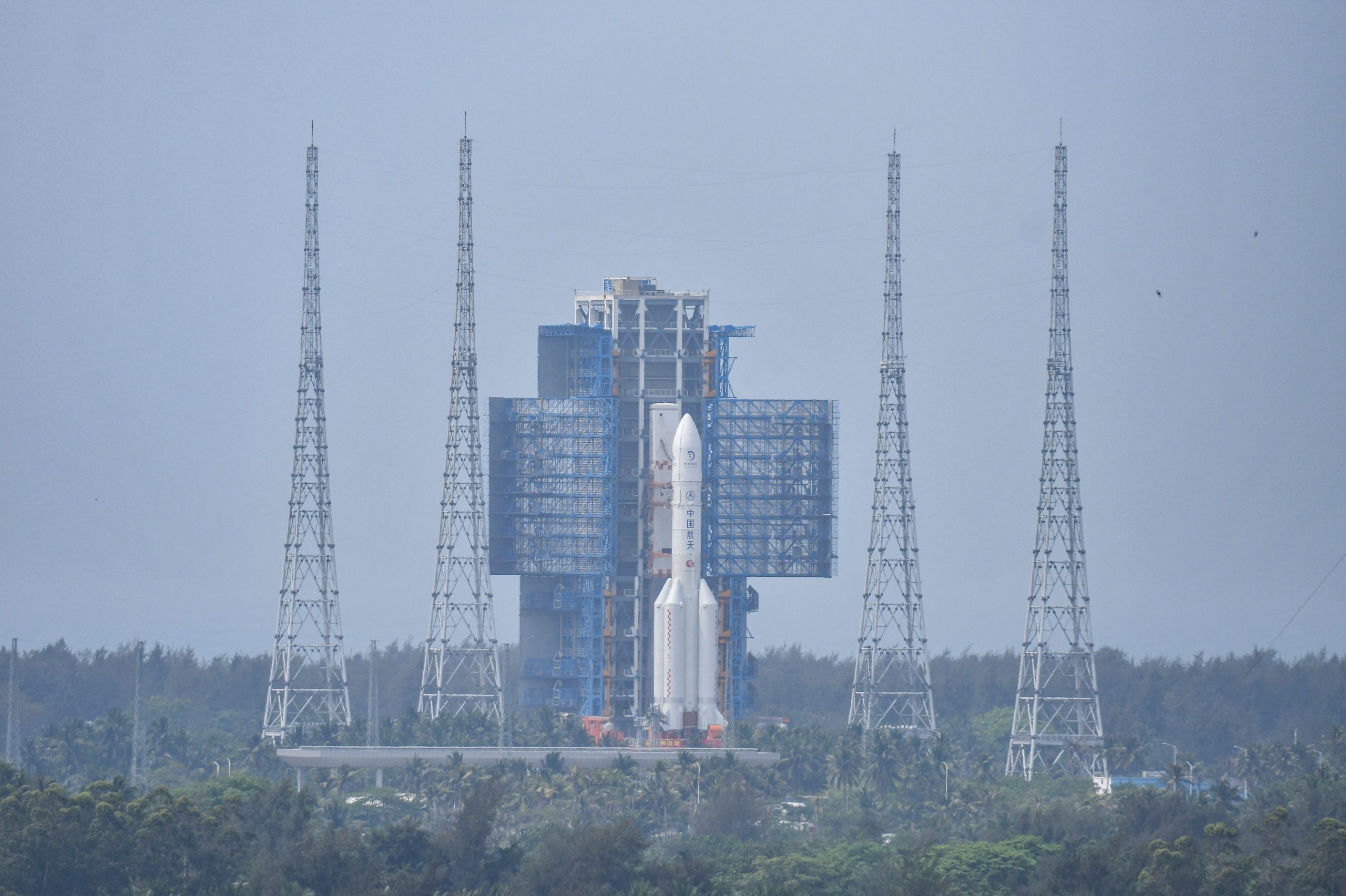China is set to launch a robotic spacecraft to the far side of the moon, marking the beginning of three advanced missions aimed at preparing for its first crewed lunar landing and establishing a base at the lunar south pole. Since the initial Chang’e mission in 2007—named after the mythical Chinese moon goddess—China has significantly advanced its lunar exploration capabilities, closing the technological gap with the United States and Russia.
In 2020, China achieved a milestone by retrieving samples from the moon’s near side, the first such accomplishment in over four decades. This demonstrated China’s capability to return an uncrewed spacecraft safely to Earth from the moon.
The upcoming Chang’e-6 mission will employ the backup spacecraft from the 2020 mission to collect soil and rocks from the moon’s far side, which always faces away from Earth. This mission, lacking direct communication with Earth, will depend on a relay satellite recently positioned in lunar orbit. The mission includes a pioneering attempt to ascend from the moon’s obscured side during its 53-day duration.
The relay satellite will also support future missions, Chang’e-7 and Chang’e-8, planned for 2026 and 2028, respectively. These missions will explore the moon’s south pole for water resources and initiate the construction of a basic outpost in collaboration with Russia. China’s goal is to have its astronauts on the moon by 2030.
The U.S., however, remains cautious of Beijing’s lunar ambitions, with NASA Administrator Bill Nelson expressing concerns over China potentially claiming lunar resources exclusively. Despite this, Beijing has affirmed its commitment to international cooperation in building a collaborative future in space.
Chang’e-6 will carry international payloads including contributions from France, Italy, Sweden, and Pakistan, while Chang’e-7 will include payloads from Russia, Switzerland, and Thailand. Due to U.S. legal constraints, NASA cannot collaborate directly or indirectly with China.
Under the U.S.-led Artemis program, American astronauts are scheduled to land near the moon’s south pole in 2026, marking the first human lunar visit since 1972.
The target for Chang’e-6’s landing is the northeastern area of the South Pole-Aitken Basin, the oldest identified impact crater in the solar system. This follows the southernmost landing to date, carried out by the IM-1 mission—a collaboration between NASA and Intuitive Machines—which faced significant technical challenges upon touchdown.
The moon’s south pole, known as the “golden belt” of lunar exploration, could potentially support long-term research bases with its polar ice, reducing reliance on costly resources from Earth. This region was confirmed to contain ice within its craters by India’s Chandrayaan-1 mission in 2008.

The forthcoming sample return by Chang’e-6 could provide new insights into the moon’s early evolution and the formation of the inner solar system. The far side’s lack of volcanic activity has preserved numerous ancient craters, maintaining records from the moon’s formation.
Upon a successful landing, Chang’e-6 aims to gather approximately 2 kilograms (4.4 pounds) of lunar samples using a mechanical scoop and drill. This mission, if successful, will be a significant milestone in lunar exploration, offering a deeper understanding of our moon’s origins.





